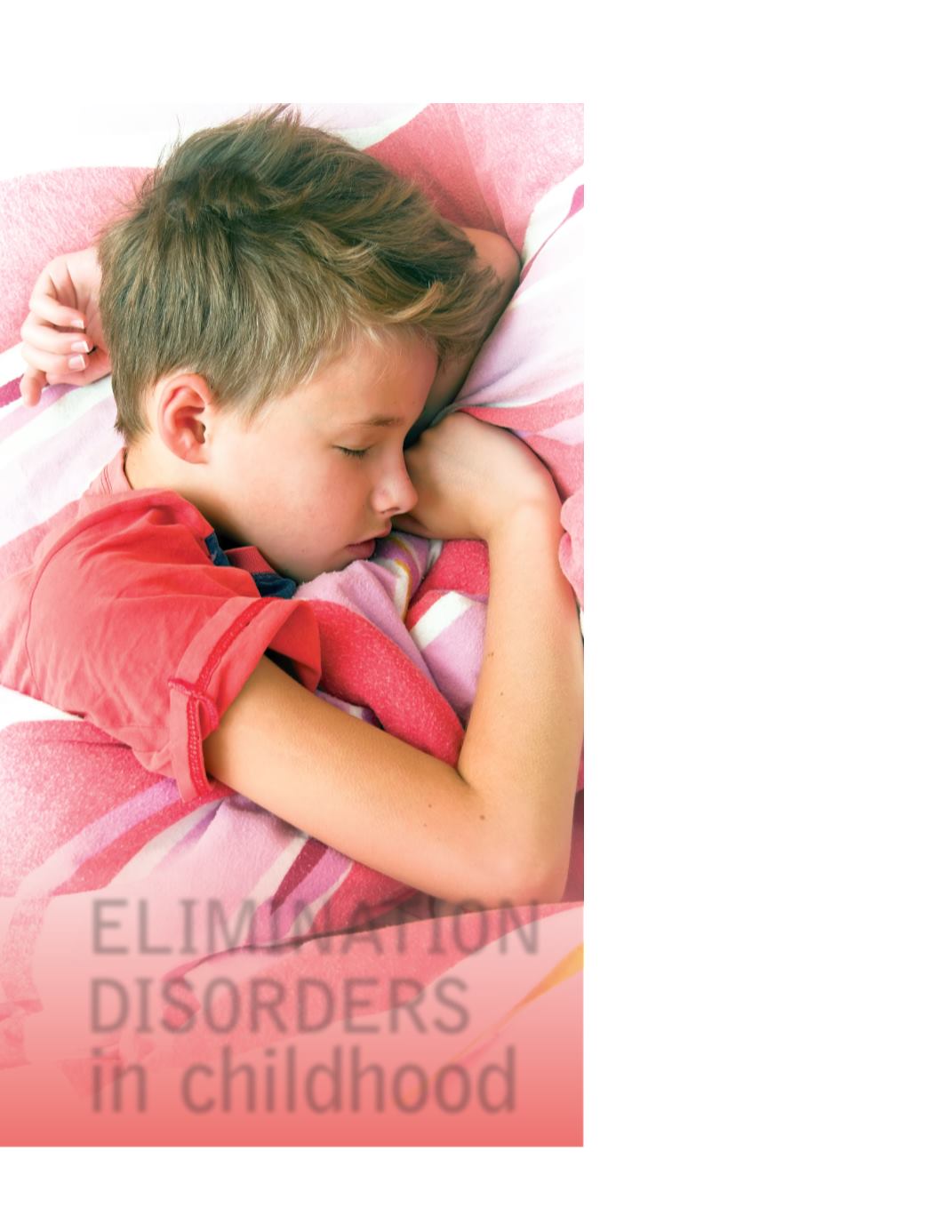
44
christian counseling today
Vol. 20 no. 2
Tr i na Young Greer
g
elimination
disorders
in childhood
Going to the bathroom may not exist in
heaven, but while here on earth, it is a
mundane reality—mundane, that is, except
for children suffering from elimination
disorders. These children often carry associ-
ated feelings of shame and embarrassment,
accompanied with much anxiety for the
child and his or her parents.
Elimination disorders are diagnosed
when children eliminate in inappropriate
places or times, and in the absence of a
physical condition to explain it. The two
primary diagnoses classified by the
DSM-5
are Enuresis (wetting) and Encopresis
(soiling). Other diagnoses used when full
criteria for Enuresis or Encopresis are not
met include, “Other Specified Elimination
Disorder” and “Unspecified Elimination
Disorder.”
Enuresis
Enuresis is diagnosed when a child of at
least five-years-old exhibits a urination
problem (whether intentional or involun-
tary) that occurs more than once per week
for three consecutive months or causes
significant distress or impairs the child’s
functioning. There are three subtypes
of Enuresis: Diurnal Only (daytime),
Nocturnal Only (nighttime), or both.
Enuresis is more frequent in younger
children, with as many as 10% of five-year-
olds experiencing a wetting problem. It is
less common as children age, with only 1%
of 15-year-olds evidencing the problem.
When assessing for enuresis, it is important
to rule out a physical cause for the wetting.
Gaining the parents’ perspective regarding
the onset and course of the wetting
behavior is beneficial. Standardized psycho-
logical testing is helpful to evaluate for
other problems and comorbid conditions,
which may contribute to, or exacerbate, the
enuresis (e.g., impulsivity, anger, Attention
Deficit Hyperactivity Disorder, depression,
anxiety, or trauma).
Etiologies for enuresis are varied, and
primarily fall into either psychodynamic
theories, biobehavioral causes, or a combi-
nation of the two. Older psychodynamic


